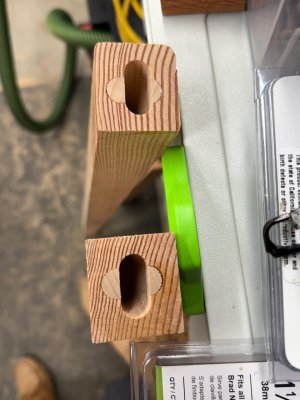ear3
Member
[member=15289]Birdhunter[/member] Fully agree. Plus there are additional steps one can take to get that precision when needed. You can have matching length stock, dead on mortise/domino alignment, but then the clamping pressure can throw something off. So I now just build slack into my production process for things like door/cabinet panels or canvas stretchers, e.g., I initially build a planned 18" x 32" door frame at 18 1/8" x 32 1/8" or 18 3/16" x 32 3/16". After glue up I square one corner with the track saw, then cut the rest to final size. And it's not like you don't have to shave even more off in some cases to fit them to the specific cabinet carcasse.
Birdhunter said:I use extremely tight tolerances where necessary but not when applications do not need tight tolerances. Very few of my woodworking applications require or benefit from using tight to tight mortises. Using tight to loose mortises requires just a couple of hammer taps to achieve perfect alignment. Less stress fewer bad words!

